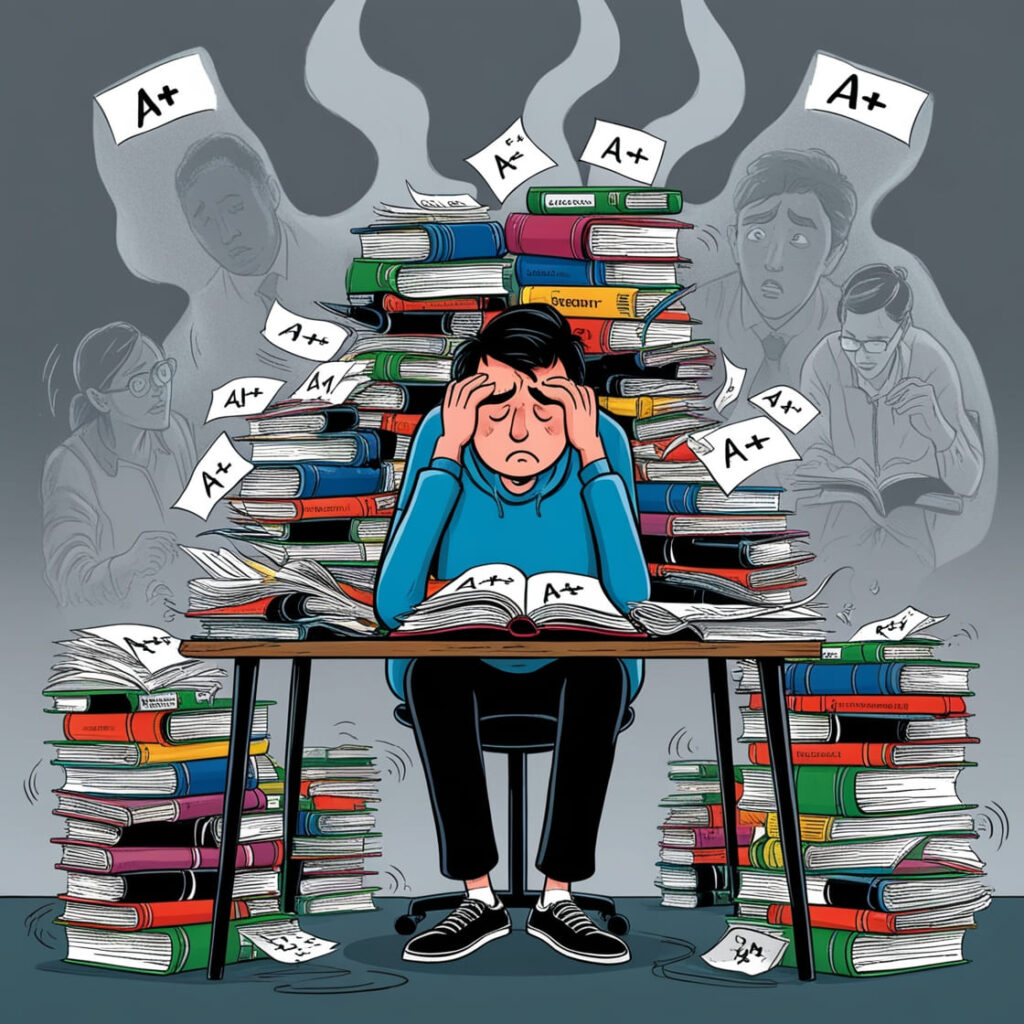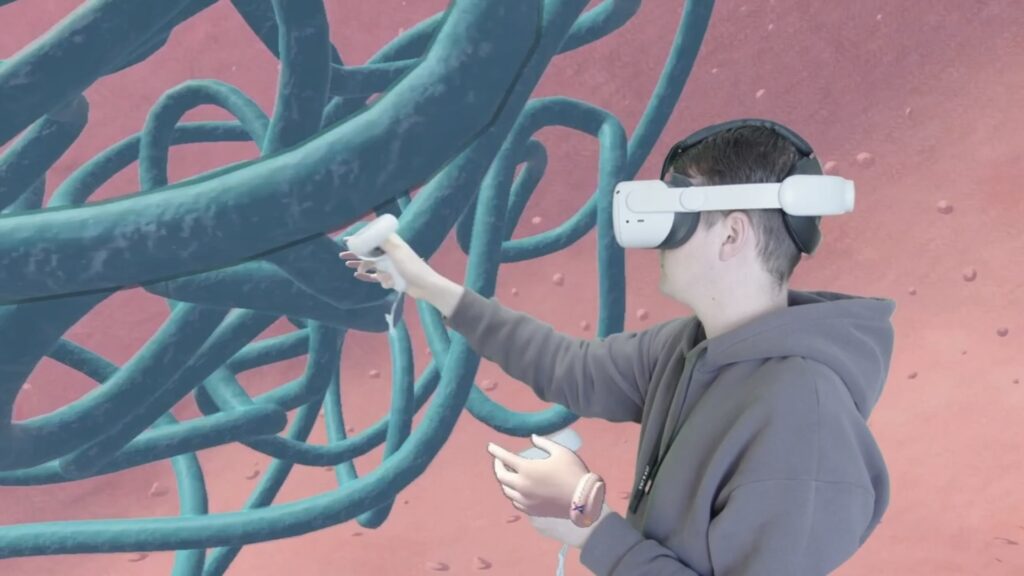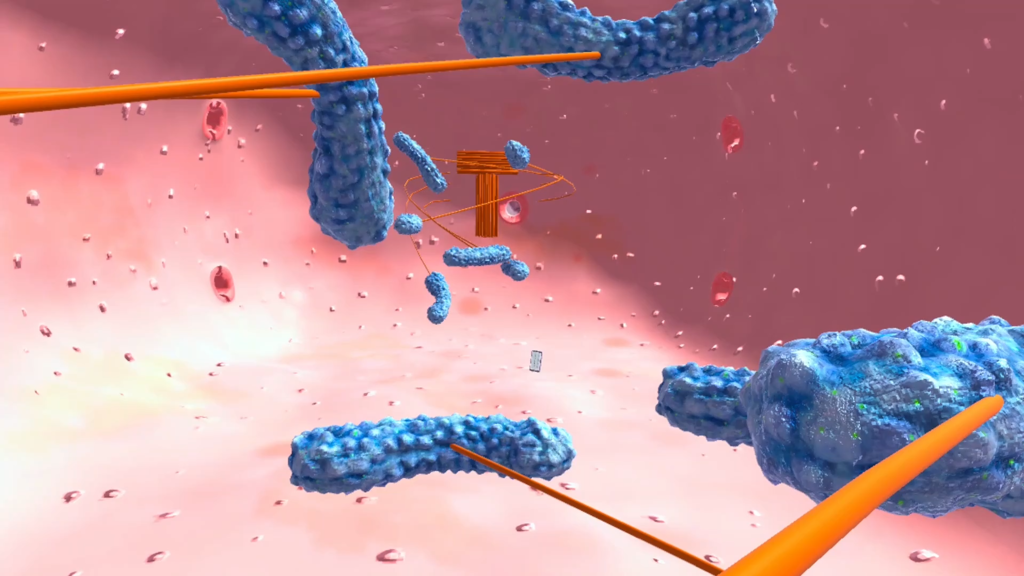

In today’s competitive academic environment, many students strive for perfection, aiming for the highest grades and accolades. While ambition is commendable, an excessive focus on grades over genuine understanding can lead to what’s known as the overachiever syndrome. This phenomenon can hinder true learning and negatively impact a child’s mental health.
When students develop overachiever syndrome, their primary goal becomes achieving top marks rather than gaining true understanding. The education system, with its emphasis on grades and standardized testing, often inadvertently encourages this mindset. Students become fixated on memorizing information and meticulously calculating their average scores, frequently at the expense of deep, meaningful learning.
Surface Learning: In their quest for perfection, these students might cram large amounts of information to excel in exams or presentations. They focus on rote memorization and short-term retention strategies, which may help them achieve high scores in the moment. However, this approach often lacks context and connection to broader concepts. Without genuine comprehension, they struggle to recall or apply the material in new situations, hindering their ability to think critically and solve problems creatively.
This surface-level engagement with the material prevents students from developing a robust foundation of knowledge. It turns education into a checklist of tasks to complete rather than an enriching process of discovery and understanding. As a result, learning becomes a means to an end—a high grade—rather than an enjoyable and enlightening journey.

Fear of Mistakes: Alongside this superficial approach to learning is an intense fear of making mistakes. The pressure to be perfect creates a high-stress environment where errors are seen as failures rather than opportunities for growth. This fear extends beyond academics, impacting students’ confidence and willingness to take risks in all areas of life.
The anxiety associated with the possibility of falling short can lead to mental health issues such as chronic stress, burnout, and even depression. It stifles creativity and discourages experimentation, essential components of genuine learning and personal development. Students may avoid challenges or new experiences altogether to protect their perfect records, missing out on valuable learning opportunities.
Moreover, this obsession with perfection can strain relationships and reduce overall life satisfaction. When the focus is solely on grades, students may neglect social interactions, extracurricular activities, and hobbies that contribute to a balanced and fulfilling life.
We recently delved deeper into the balance between mental health and academic success in our article on Mental Health vs. Grades in VR Education.
Overachievers often prefer ready-made theoretical material that’s guaranteed to be correct. This reliance on certainty makes them anxious about practical work and experiments. Instead of asking exploratory questions like, “How can I discover this?” or “What happens if I try this?”, they fixate on following instructions to the letter, fearing any deviation might lead to failure.
This mindset limits their ability to engage in hands-on activities and hinders the development of critical thinking and problem-solving skills. Practical experiments are essential for deep comprehension and fostering a love for learning, especially in subjects like biology, chemistry, and physics.
Incorporating virtual reality into education can address these challenges by providing a safe and controlled environment for experimentation. Technologies like VR biology, VR chemistry, and VR physics allow students to explore concepts interactively without the fear of making irreversible mistakes.

Virtual reality in education offers a transformative solution to these challenges. By providing an immersive and controlled environment, VR education allows students to experiment, make mistakes, and learn without the high stakes associated with traditional settings.
Implementing VR in the classroom creates an interactive classroom environment where mistakes become learning opportunities. This approach aligns with the principles of a smart classroom and an intelligent classroom platform, leveraging technology to enhance education.

Teachers can use VR education platforms to design lessons that promote critical thinking and problem-solving. By shifting the focus from rote memorization to exploration, students develop a deeper understanding and a genuine interest in the subject matter.
Absolutely. Virtual reality safety is a priority, with guidelines in place to ensure a healthy learning environment. VR allows for controlled scenarios where students can engage fully without physical risks.
Experience the benefits of virtual reality in education firsthand. At XReady Lab, we offer immersive VR solutions that can transform your teaching approach and help students overcome the limitations of overachiever syndrome.
👉 Request your free XReady Lab STEM VR demo today!
The overachiever syndrome highlights a significant issue in modern education: the emphasis on grades over learning. By embracing technologies like VR education, we can create environments that encourage curiosity, reduce anxiety, and promote genuine understanding.
Let’s move towards an educational model where making mistakes is part of the learning journey, not something to be feared. Together, we can help students break free from the pressures of perfectionism and ignite a passion for learning that lasts a lifetime.
Frequently Asked
We prodive VR biology, VR physics, and VR chemistry simulations. Please, check our catalog.
Please, fill the form to get demo labs for free.
Please contact our customer support service at support@xreadylab.com or book a call with the team to find out the conditions and book the VR class set up at your school.
Subscription to XReady Lab interactive VR labs. If you are a school, then you are also given access to the VR classroom system. VR class system helps you easily launch VR lessons for a large number of students, follow the experience of each student, as well as customise the content without developers.
We adhere to the world’s generally accepted recommendations and research. Our products are suitable for children from 12 years old.